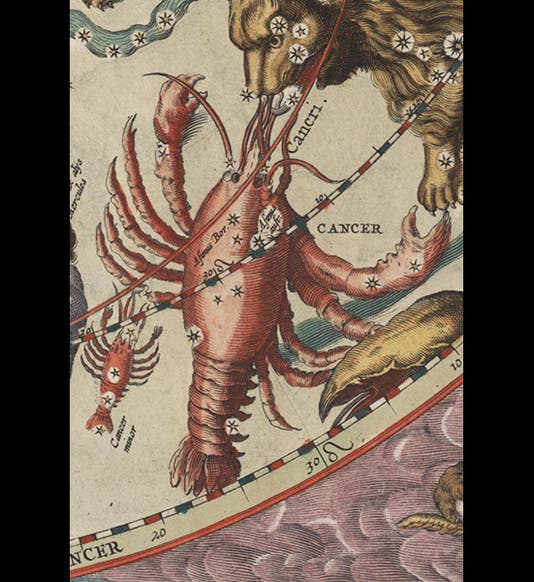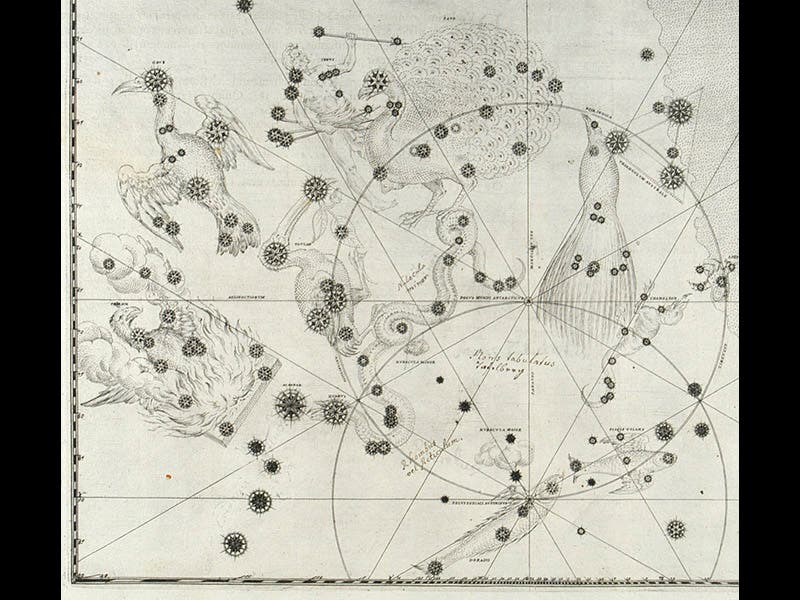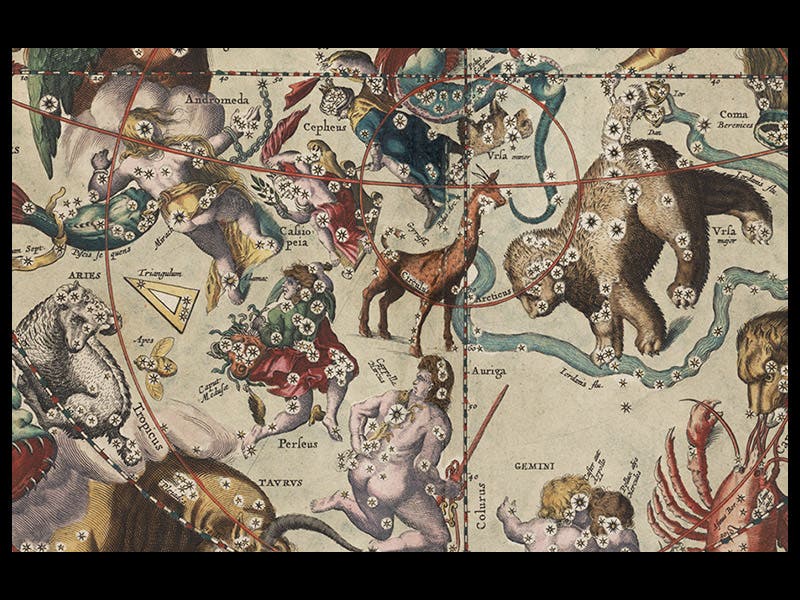Scientist of the Day - Petrus Plancius
Petrus Plancius, a Dutch map and globe maker, died May 15, 1622; his date of birth is unknown. In the late 16th century, the Dutch began a series of trading voyages around Africa to the East Indies that would culminate in the founding of the Dutch East India Company in 1602. Navigation was initially difficult, because there were no accurate maps of the southern skies. In 1595, Plancius commissioned a pilot, Pieter Keyser, to record the position of as many southern stars as possible on a voyage to the Indies. Keyser catalogued about 130 stars, probably with the help of a colleague, Frederick de Houtman. Keyser died in 1596, before his return, but Plancius obtained the observations and proceeded to divide the southern stars up into 12 constellations (or so we think--it is possible that Keyser and/or Houtman played a role in naming the southern constellations).
Whereas all of the northern constellations were mythological in origin, Plancius came up with the kinds of constellations that explorers might welcome: Chamaeleon, Phoenix, Apus (Bird of Paradise), Dorado (Swordfish), Hydrus (the Water Snake), Apis (the Bee), Indus (the Indian), Pavo (Peacock), Crux (Southern Cross), Triangulum australe (Southern Triangle), Tucana (Toucan), and Volans (Flying Fish). A cartographical colleague in Amsterdam, Jodocus Hondius, was planning to publish a celestial globe in 1598, and Plancius provided him with the positions and constellation images for the southern stars, which were then printed on the 1598 globe. No copies of that globe survive, but in 1602, a third globe maker, Willem Janszoon Blaeu, produced a copy of the Plancius/Hondius celestial globe of 1598. One of those survives in Greenwich, and we see above (second image) the bottom of the globe, showing the southern constellations. Chamaeleon is visible right in the center, Dorado to the left, and Crux under the haunches of the Centaur at the right, while Pavo, Tucana, and Phoenix are visible below the brass circle. The very next year, Johann Bayer published his star atlas, the Uranometria (1603), the first modern star atlas, and following the 48 plates showing the 48 traditional constellations, Bayer added a 49th engraving, depicting the new Plancius constellations (third image). To see the Southern Cross, you have to look at the plate showing Centaurus (fourth image), where Crux has been added in between the hind feet of the Centaur. This is the first star map, by the way, to show alpha Centauri (the star in the front left foot) by that name, because Bayer was the one who began the practice of labeling stars with letters of the Greek alphabet.
Nine years later, Plancius introduced 8 more constellations on another celestial globe of 1612. Most of these constellations were not adopted by other cartographers or astronomers, but two of them survive in modern skies: Monoceros (the Unicorn), and Camelopardalis (Giraffe). You can see the Giraffe on an engraved plate in Andreas Cellarius’ Harmonia macrocosmica (1661; fifth image). The same atlas depicts one of Plancius’s most charming inventions, Cancer minor (the Little Crab; first image), but this was its last appearance, as later astronomers rejected it. If we add in Columba (the Dove), which Plancius had introduced way back in 1592, then that gives Plancius the authorship of 15 constellations, out of the 88 that are now accepted by astronomers.
The engraved portrait of Plancius is from an oil painting that is now lost (sixth image).
Dr. William B. Ashworth, Jr., Consultant for the History of Science, Linda Hall Library and Associate Professor, Department of History, University of Missouri-Kansas City. Comments or corrections are welcome; please direct to ashworthw@umkc.edu.









![“Aurora Borealis,” hand-colored wood engraving by Josiah Wood Whymper, [Natural Phenomena], plate 2, 1846 (Linda Hall Library)](https://assets-us-01.kc-usercontent.com:443/9dd25524-761a-000d-d79f-86a5086d4774/0245ffcb-b70c-477c-8792-0a73ebd54eb2/Whymper%2011.jpg?w=210&h=210&auto=format&fit=crop)


